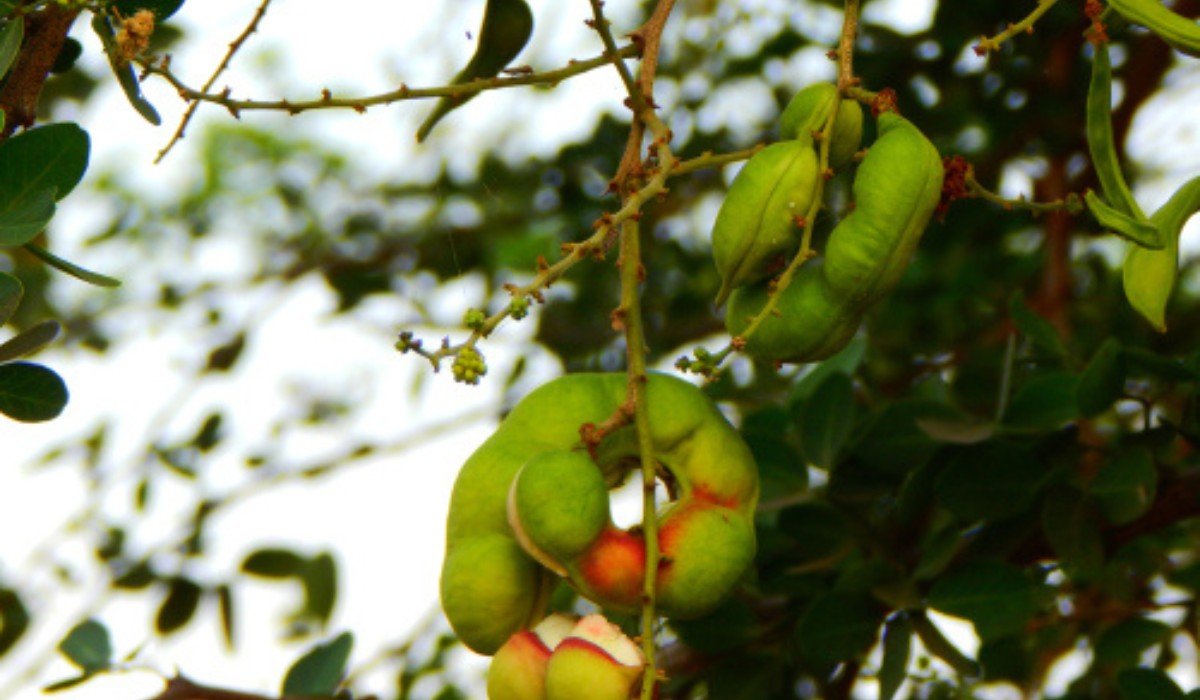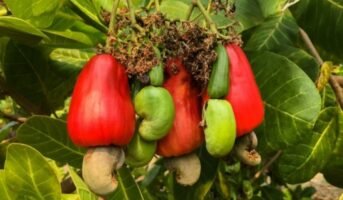Pithecellobium dulce, or Manila tamarind, is a legume that belongs to the family Fabaceae. The genus name, Pithecellobium, refers to pithecium, another name for the type of flower. P. dulce means sweet legume.
Pithecellobium dulce grows in tropical and subtropical regions, often in swampy areas with low levels of rainfall. It has been found in South America, Africa and Asia. It is also found in Australia and New Zealand, where it can be seen as an invasive species.
See also: All about India’s National Tree- Banyan
The Pithecellobium dulce plant grows best in warm climates with high rainfall levels. It can grow up to 15 m tall and live for about 20 years when cultivated properly. The Pithecellobium dulce plant requires between 6-8 hours of sunlight each day during its growing seasons, which are usually from March through September or October, depending on where it is grown.

Source: Pinterest
Pithecellobium dulce: Quick facts
| Botanical Name | Pithecellobium dulce |
|---|---|
| Common Name | Manila Tamarind, Madras thorn |
| Genus | Pithecellobium |
| Kingdom | Plantae |
| Clade | Tracheophytes |
| Family | Fabaceae |
| Life Cycle | Annual |
| Mature Size | Up to 15 m tall |
| Cultivation | South America, Africa and Asia |
| Benefits | Medical properties, making tea and other beverages |
Pithecellobium dulce: Physical description

Source: Pinterest
The plant produces flowers at the end of branches or even at the end of its stems and branches. These flowers are white or yellowish and have five petals which resemble the lily of the valley flowers.
The leaves are simple ovate to lanceolate and have various lengths depending on the age of the plant. At maturity, they form a complete circle around their mid-point at their base. They are either round or heart-shaped with serrated margins, and they are located along the stem axis.
Pithecellobium dulce: How to grow
- It can be propagated by seeds.
- Place 1-2 seeds in moist sand (or soil) at room temperature for one month.
- Afterwards, plant them outdoors in full sunlight, where they will germinate in approximately two weeks. Although this may take longer in cooler climates.
- It can be propagated through cuttings too. Plant bare root cuttings in well-drained soil in an area with ample sunlight and water frequently until they begin to root, which takes approximately 3 weeks.
Growing Tips
- The Pithecellobium dulce plant can either be planted indoors or outdoors, but it is best suited for outdoor cultivation. To grow the Pithecellobium dulce plant successfully, you must provide it with proper care and maintenance.
- You should start by preparing your soil before planting your seedlings.
- Compost or manure must be mixed into the soil, as well as plenty of fertiliser, to ensure that Pithecellobium dulce plants have enough nutrients to thrive.
- Once you have prepared your soil, water it properly so that it doesn’t get too dry or too wet during this process.
- Once your seedlings have sprouted, they will need sunlight to grow properly. Therefore, make sure they receive adequate sunlight throughout their first few weeks after germination.
- Once your Pithecellobium dulce seedlings are about two inches tall. They will need more sunlight to bloom.
Pithecellobium dulce: Maintenance tips
- Pithecellobium dulce thrives in light, which helps it bloom more vigorously and produce more flowers.
- Pithecellobium dulce’s roots need water to stay healthy and happy. Watering it once a week should suffice to keep it happy without damaging its roots. More frequent watering can cause root rot which leads to poor growth, so be sure not to overdo it.
- If you decide to grow it indoors, you will need to provide plenty of sunshine and bright light. You should also keep the temperature between 22 – 28 degrees Celsius during the day and 18 – 25 degrees Celsius at night.
- To ensure that your Pithecellobium dulce is ready for harvest when temperatures rise in spring, consider growing it as an annual rather than a perennial.
- The soil that you use for growing Pithecellobium dulce should be well-drained but not too sandy or rocky because this will prevent roots from developing properly.
Pithecellobium dulce: Uses
- The Manila tamarind tree serves many purposes. Sweetish acidic pulp is found in the pods, and the pods are edible. In addition to eating them raw, they can also be processed into a soft drink similar to lemonade.
- Pithecellobium dulce has been used for centuries by indigenous communities in Central America for its medicinal properties.
- The leaves and roots were used to treat a variety of ailments, including sore throat, infections, gastrointestinal disorders, and even depression.
- The seeds can be dried and ground into a powder or brewed into a tea that is then consumed orally.
- The leaves can be consumed raw or cooked into salads or soups.
FAQs:
Can you eat Manila tamarind?
Yes. The pods can be peeled and eaten.
Is Pithecellobium dulce poisonous?
No, the plant does not have any known toxic effects.
Housing News Desk is the news desk of leading online real estate portal, Housing.com. Housing News Desk focuses on a variety of topics such as real estate laws, taxes, current news, property trends, home loans, rentals, décor, green homes, home improvement, etc. The main objective of the news desk, is to cover the real estate sector from the perspective of providing information that is useful to the end-user.
Facebook: https://www.facebook.com/housing.com/
Twitter: https://twitter.com/Housing
Email: [email protected]











